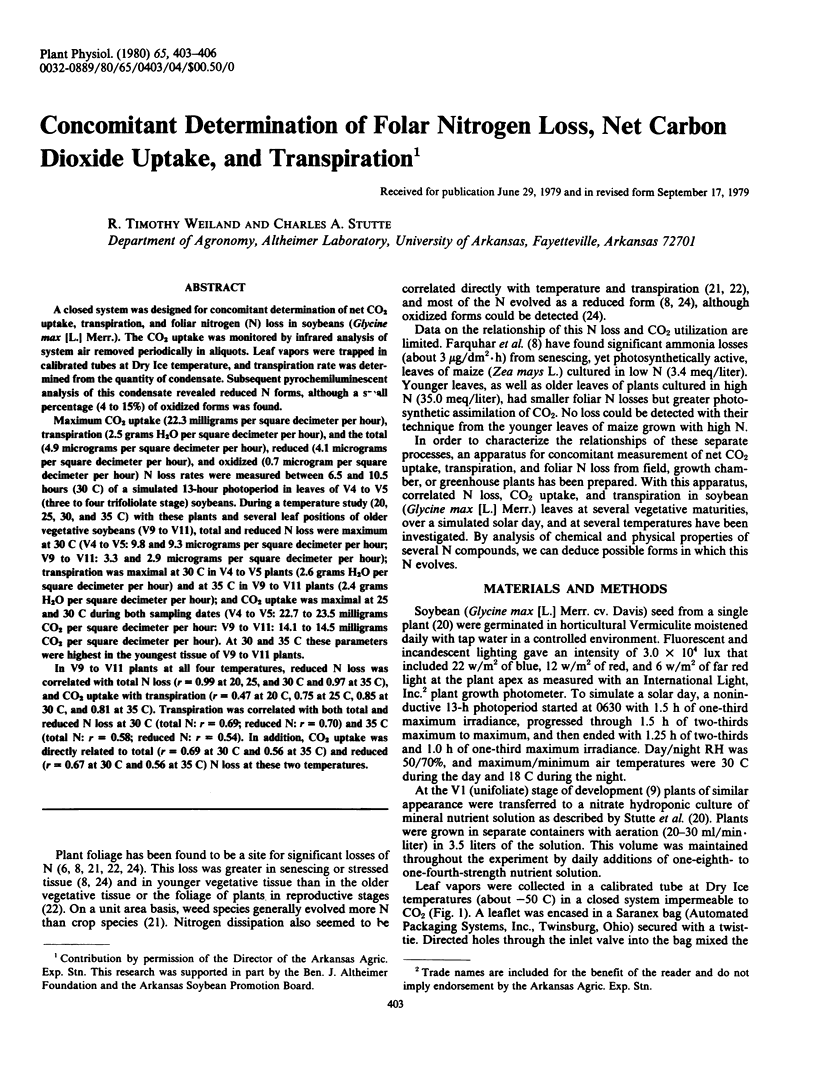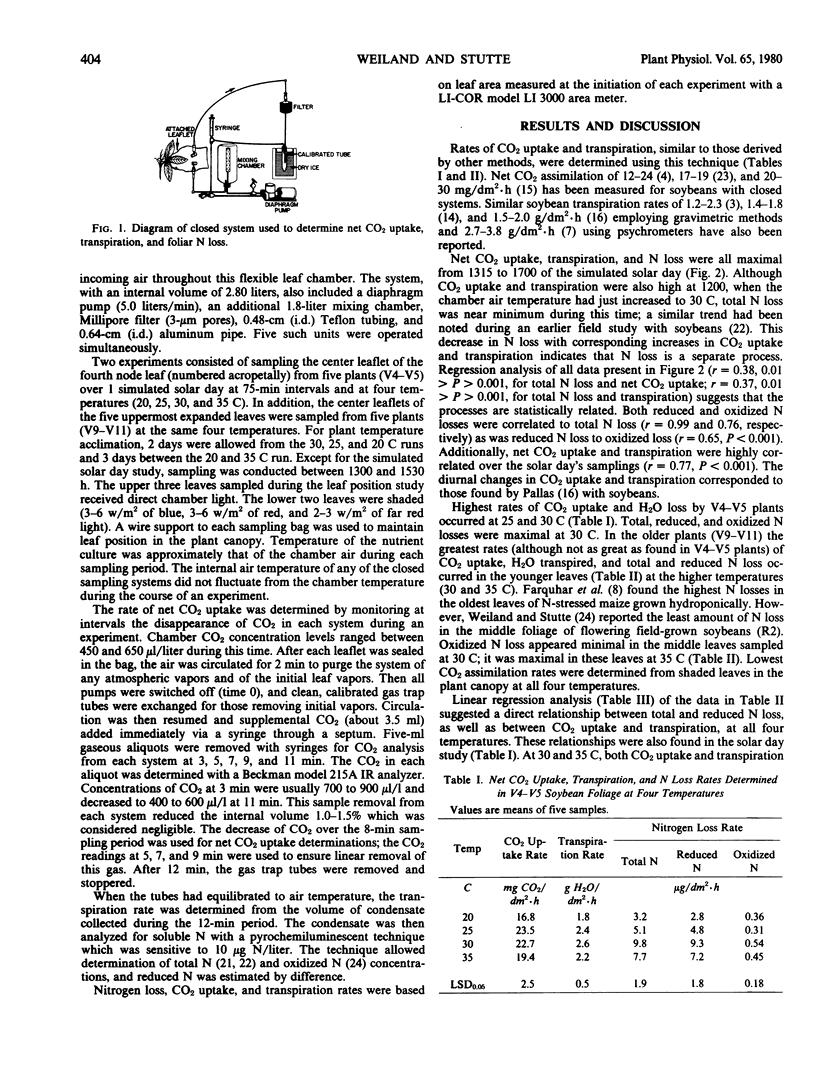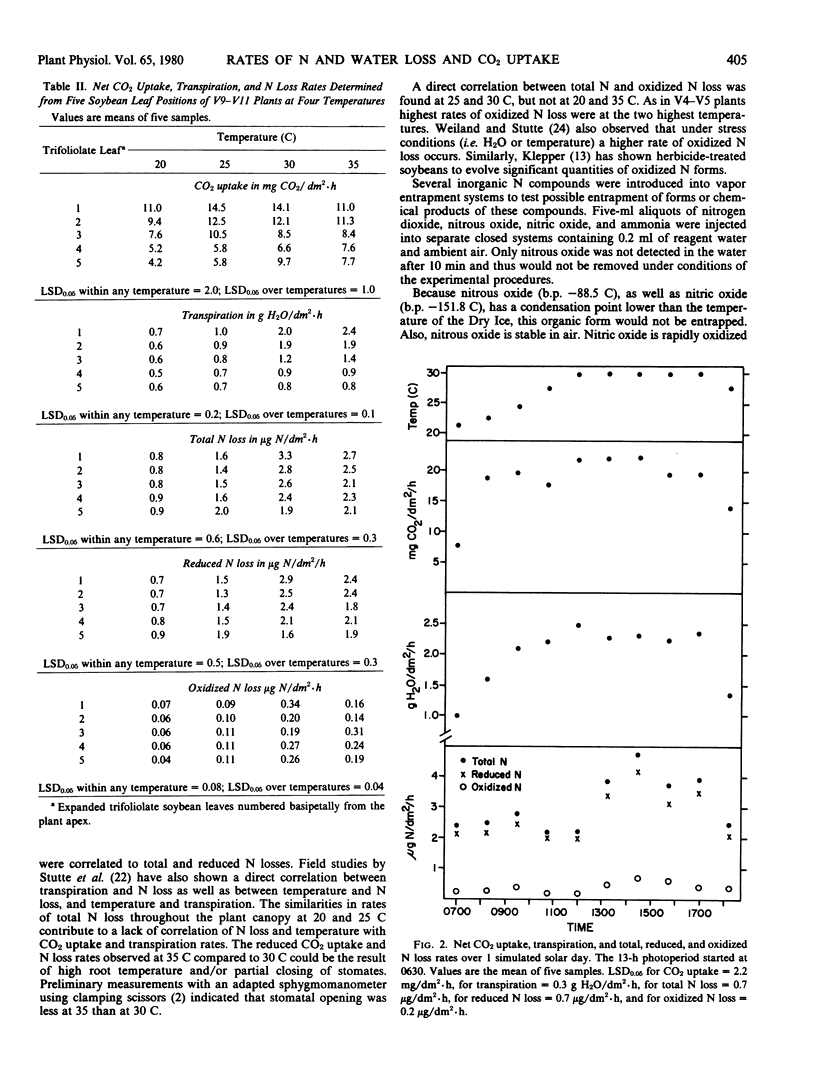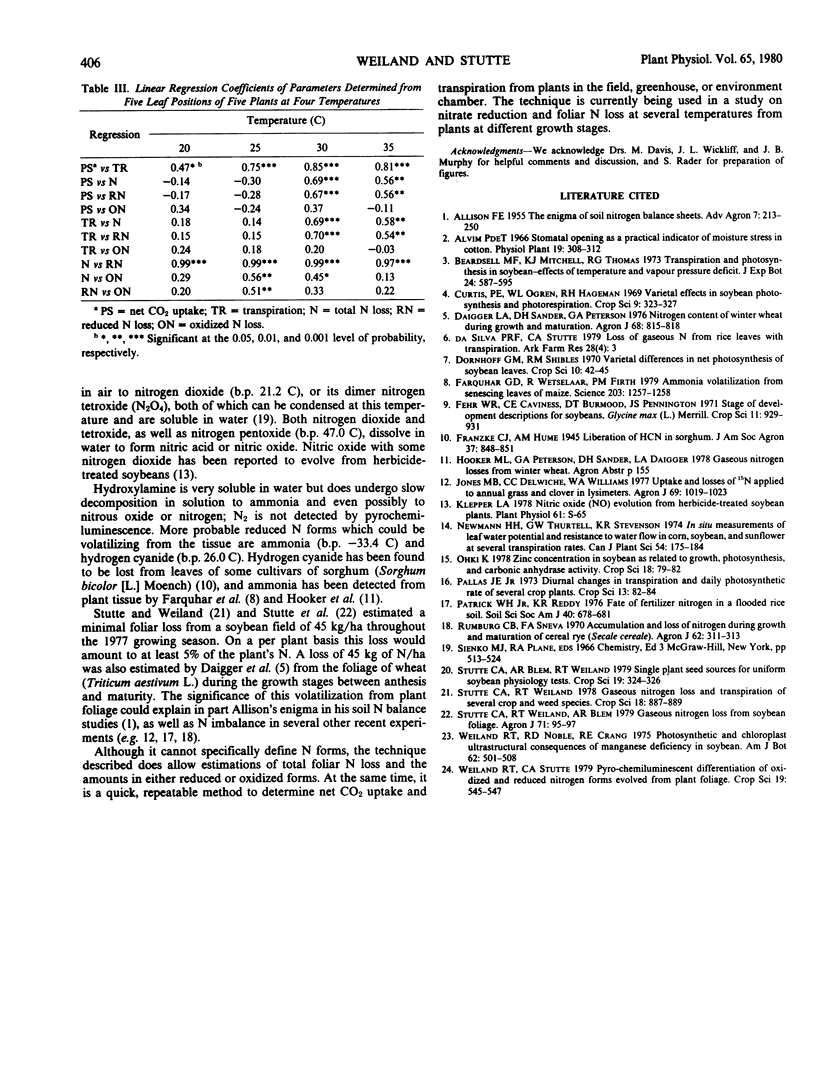Abstract
A closed system was designed for concomitant determination of net CO2 uptake, transpiration, and foliar nitrogen (N) loss in soybeans (Glycine max [L.] Merr.). The CO2 uptake was monitored by infrared analysis of system air removed periodically in aliquots. Leaf vapors were trapped in calibrated tubes at Dry Ice temperature, and transpiration rate was determined from the quantity of condensate. Subsequent pyrochemiluminescent analysis of this condensate revealed reduced N forms, although a [ill] percentage (4 to 15%) of oxidized forms was found.
Maximum CO2 uptake (22.3 milligrams per square decimeter per hour), transpiration (2.5 grams H2O per square decimeter per hour), and the total (4.9 micrograms per square decimeter per hour), reduced (4.1 micrograms per square decimeter per hour), and oxidized (0.7 microgram per square decimeter per hour) N loss rates were measured between 6.5 and 10.5 hours (30 C) of a simulated 13-hour photoperiod in leaves of V4 to V5 (three to four trifoliolate stage) soybeans. During a temperature study (20, 25, 30, and 35 C) with these plants and several leaf positions of older vegetative soybeans (V9 to V11), total and reduced N loss were maximum at 30 C (V4 to V5: 9.8 and 9.3 micrograms per square decimeter per hour; V9 to V11: 3.3 and 2.9 micrograms per square decimeter per hour); transpiration was maximal at 30 C in V4 to V5 plants (2.6 grams H2O per square decimeter per hour) and at 35 C in V9 to V11 plants (2.4 grams H2O per square decimeter per hour); and CO2 uptake was maximal at 25 and 30 C during both sampling dates (V4 to V5: 22.7 to 23.5 milligrams CO2 per square decimeter per hour: V9 to V11: 14.1 to 14.5 milligrams CO2 per square decimeter per hour). At 30 and 35 C these parameters were highest in the youngest tissue of V9 to V11 plants.
In V9 to V11 plants at all four temperatures, reduced N loss was correlated with total N loss (r = 0.99 at 20, 25, and 30 C and 0.97 at 35 C), and CO2 uptake with transpiration (r = 0.47 at 20 C, 0.75 at 25 C, 0.85 at 30 C, and 0.81 at 35 C). Transpiration was correlated with both total and reduced N loss at 30 C (total N: r = 0.69; reduced N: r = 0.70) and 35 C (total N: r = 0.58; reduced N: r = 0.54). In addition, CO2 uptake was directly related to total (r = 0.69 at 30 C and 0.56 at 35 C) and reduced (r = 0.67 at 30 C and 0.56 at 35 C) N loss at these two temperatures.
Full text
PDF



Selected References
These references are in PubMed. This may not be the complete list of references from this article.
- Farquhar G. D., Wetselaar R., Firth P. M. Ammonia volatilization from senescing leaves of maize. Science. 1979 Mar 23;203(4386):1257–1258. doi: 10.1126/science.203.4386.1257. [DOI] [PubMed] [Google Scholar]


